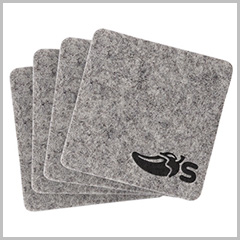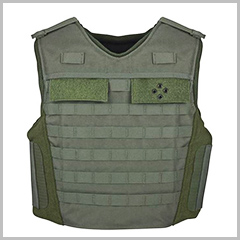Cutting Fiberglass: Methods & Safety Concerns
Intro: What Cuts Fiberglass?
Fiberglass is strong, lightweight, and versatile — which makes it great for things like insulation, boat parts, panels, and more. If you’re wondering what cuts fiberglass best, it’s important to know that cutting fiberglass isn’t as simple as slicing wood or plastic. Among various options, laser cutting fiberglass is a precise method, but regardless of the technique, cutting fiberglass can pose serious health risks if you’re not careful.
So, how do you cut it safely and effectively? Let’s walk through the three most common cutting methods and the safety concerns you need to be aware of.
Three Common Methods for Cutting Fiberglass
1. Laser Cutting Fiberglass (Most Recommended)
Best for: Clean edges, detailed designs, less mess, and overall safety
If you’re looking for a method that’s precise, efficient, and safer than others, laser cutting fiberglass is the way to go. Using a CO₂ laser, this method cuts the material with heat instead of force — meaning no blade contact, less dust, and incredibly smooth results.
Why do we recommend it? Because it gives you excellent cutting quality with minimal health risk when used with a proper exhaust system. There’s no physical pressure on the fiberglass, and the precision is perfect for both simple and complex shapes.
User tip: Always pair your laser cutter with a fume extractor. Fiberglass can release harmful vapors when heated, so ventilation is key.
2. CNC Cutting (Computer-Controlled Precision)
Best for: Consistent shapes, medium to large batch production
CNC cutting uses a computer-controlled blade or router to cut fiberglass with good accuracy. It’s great for batch jobs and industrial use, especially when equipped with a dust collection system. However, compared to laser cutting, it may produce more airborne particles and require more post-cleanup.
User tip: Make sure your CNC setup includes a vacuum or filtration system to reduce inhalation risks.
3. Manual Cutting (Jigsaw, Angle Grinder, or Utility Knife)
Best for: Small jobs, quick fixes, or when no advanced tools are available
Manual cutting tools are accessible and inexpensive, but they come with more effort, mess, and health concerns. They create a lot more fiberglass dust, which can irritate your skin and lungs. If you go this route, wear full protective gear and be prepared for a less precise finish.
User tip: Wear gloves, goggles, long sleeves, and a respirator. Trust us — fiberglass dust is not something you want to breathe in or touch.
Why Laser Cutting Is the Smart Choice
If you're trying to decide how to cut fiberglass for your next project, here's our honest recommendation:
Go with laser cutting if it's available to you.
It offers cleaner edges, less cleanup, and safer operation — especially when paired with proper fume extraction. Whether you're a hobbyist or a professional, it’s the most efficient and user-friendly option out there.
Still unsure which method fits your project best? Feel free to reach out — we’re always here to help you choose with confidence.
Learn More about How to Laser Cut Fiberglass
Recommended Fiberglass Laser Cutting Machine
| Working Area (W * L) | 1600mm * 3000mm (62.9’’ *118’’) |
| Max Material Width | 1600mm (62.9’’) |
| Software | Offline Software |
| Laser Power | 150W/300W/450W |
| Working Area (W * L) | 1600mm * 1000mm (62.9” * 39.3 ”) |
| Max Material Width | 1600mm (62.9’’) |
| Software | Offline Software |
| Laser Power | 100W/150W/300W |
| Working Area (W * L) | 1800mm * 1000mm (70.9” * 39.3 ”) |
| Max Material Width | 1800mm (70.9’’) |
| Software | Offline Software |
| Laser Power | 100W/150W/300W |
Is Cutting Fiberglass Dangerous?
Yes — if you’re not careful. Cutting fiberglass releases tiny glass fibers and particles that can:
• Irritate your skin and eyes
• Trigger respiratory problems
• Cause long-term health issues with repeated exposure
Yes — if you’re not careful. Cutting fiberglass releases tiny glass fibers and particles that can:
That’s why method matters. While all cutting methods require protection, laser cutting fiberglass significantly reduces direct exposure to dust and debris, making it one of the safest and cleanest options available.
Videos: Laser Cutting Fiberglass
How to Laser Cut Insulation Materials
The insulation laser cutter is a great choice for cutting fiberglass. This video shows the laser cutting fiberglass and ceramic fiber and finished samples.
Regardless of the thickness, the co2 laser cutter is competent to cut through the insulation materials and leads to a clean & smooth edge. This is why the co2 laser machine is popular in cutting fiberglass and ceramic fiber.
Laser Cutting Fiberglass in 1 Minute
With CO2 laser. But, how to cut silicone-coated fiberglass? This video shows that the best way to cut fiberglass, even if it’s silicone coated, is still using a CO2 Laser.
Used as a protective barrier against sparks, spatter, and heat - Silicone coated fiberglass found its use in many industries. But, it can be tricky to cut.
Using a ventilation system helps contain fumes and ensures a safer working environment.
MimoWork provides industrial CO₂ laser cutting machines alongside efficient fume extractors. This combination significantly enhances the fiberglass laser cutting process by improving both performance and workplace safety.
Learn More Information about How to Cut Fiberglass with Laser Cutting Machine?
Post time: Apr-25-2023








